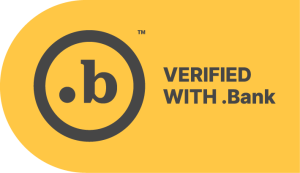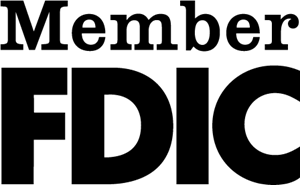Saving money is top of mind for many of us. About 9 in 10 Americans save regularly, according to a NerdWallet survey. Of these savers, most said their top goal was building an emergency fund.
Saving for your goals can be more challenging than it sounds. Should you start saving more? If so, where do you begin, and how many savings accounts should you have? One savings strategy is to open multiple accounts and use each for a specific purpose.
Should you open a second or third savings account? Discover how this strategy could benefit you, especially if you have several financial goals.
5 Common Savings Goals
Everyone has different goals. What you save for now may not be what you save for next month or next year. You may be saving up for a big purchase or a family trip at the end of the year. In 2023, Americans’ top-cited savings goals were for emergencies and retirement.
The following are five common goals. Do any of your goals align with what’s listed?
1. Emergencies
You never know what life has in store. An emergency fund prepares you for unplanned expenses, like extensive auto or home maintenance costs or a medical issue.
Your emergency fund should be easily accessible and separate from your other bank accounts. A separate account for emergencies helps you refrain from spending this money on non-emergencies.
Many experts suggest keeping three to six months of living expenses in your emergency fund. You may need to save more if you are self-employed or less if you live in a two-income household.
2. Vacation
Younger adults are saving for vacations more than other generations. In fact, over half of Gen Z adults travel frequently, finding ways to budget for trips regardless of the size of their paychecks.
While you’re off on an adventure, you can easily spend more than you planned. The last thing you want to do is come home with debt. Saving for vacation is a short-term goal you can achieve by first researching costs and estimating your trip’s total.
You can start saving once you know how much you intend to spend. From there, break down how much you must save each week or month to cover the cost. If your trip is right around the corner, you may need to reduce spending to save money quickly.
3. Christmas Gifts
Every year, consumer spending on holiday gifts and experiences increases. If you love gift-giving, start saving earlier in the year, so you’ll be ready to spread your holiday cheer.
An easy way to save for holiday spending is to open a separate savings account dedicated to the season. Christmas Club accounts offer higher interest rates, so you can earn a little extra for your holiday celebrations. You’ll be ready when it’s time to check everything off your holiday shopping list.
4. Large Purchases
Sometimes, large purchases seem to appear out of nowhere and can often come in multiples. You need to replace the fridge or put a new roof on your house. Unplanned purchases can halt your other financial goals. Prepare for these purchases with emergency savings.
You may be considering other big purchases, such as a new car or home. When buying a car or home, it often makes sense to finance. Most people don’t have the cash upfront for these types of purchases. Instead, you’ll look into financing options and determine which auto or home loan works best for you.
As you contemplate these purchases, you should start saving for your down payment to be ready when you find the right car or home.
5. Education
One of the biggest savings goals for parents is their child’s education. Tuition costs increase annually. It’s best to start saving for your child’s college education as early as possible. Custodial accounts, 529 college savings plans or a Coverdell Education Savings Account can help you save specifically for your child’s future.
At different stages of life, you’ll have different savings goals. You won’t always be saving for a down payment on a home or your child’s tuition. Your needs and goals will change over time. Regularly reviewing your budget and savings is essential to ensure they align with changes in your life.
5 Reasons to Use Multiple Savings Accounts
You’ve defined your savings goals. Now, you should consider where to keep your growing funds. Opening multiple savings accounts may help you reach your goals faster. With your goal-specific savings in a separate account, you’ll be less tempted to spend your emergency or down payment funds on other items.
Should you open another savings account? Below are a few benefits of having more than one:
1. Purpose
A single savings account can make managing several goals challenging. You only have one place to store your funds, and tracking progress on individual goals can become confusing.
With more than one savings account, each account has a purpose. Money going into the account gets marked for that purpose alone. Instead of lumping your savings together, you’ll ensure the funds go toward your goals and not elsewhere.
You can set up one account for short-term goals, like your next summer vacation, and another for long-term goals, such as higher education. A third savings account could house your emergency fund.
2. Visibility
Separate accounts let you see your savings individually. Seeing amounts for each goal versus one large sum helps you track your progress. You’ll be able to visualize how much you’ve saved and how far you still have to go, allowing you to adjust your budget accordingly.
3. Automatic Transfers
Automatic transfers make funding multiple accounts simple. You can save for several goals by sending money into each account automatically. When you schedule automatic deposits, you take something off your to-do list, making it less challenging to build up your savings over time.
4. Bonuses
If you open new accounts, you may qualify for bank bonuses. Some banks offer bonuses to new customers. You can also shop for the best rates or perks that are meaningful to you.
5. Insure More of Your Money
If you have a lot of savings, opening multiple accounts at different banks ensures your money is safe. FDIC coverage is limited to $250,000 per person, per account ownership category and per insured bank.
Multiple accounts across different banks can insure more than $250,000 for you. For example, you could have up to $250,000 insured in one account at one bank. On top of that, you could also have $30,000 saved and insured at another bank.
3 Considerations for Opening Multiple Savings Accounts
No single savings strategy works for everyone. You can decide what will be effective for you based on your goals, previous success at saving and how much you have saved already.
There are a few disadvantages of opening multiple savings accounts. Let’s explore those below.
1. More Information to Manage
Multiple accounts mean having more account numbers and requirements to remember. If you have accounts at more than one bank, you’ll have multiple login credentials to access them online.
2. Minimum Balance Fees
Most customers don’t have to worry about meeting a minimum balance with one savings account. All of your savings go into one place.
When saving for smaller goals, you should know the minimum balance requirements. You’re more likely to be charged a maintenance fee for missing the minimum when your savings are spread across accounts.
3. Lose Savings Interest
You could lose out on interest by spreading your money between accounts instead of keeping a larger sum in one account. Depending on your interest rate and balance, you can determine if this would be significant for you.
Everyone works differently. How you choose to save is up to you.
Several Ways to Save
What types of savings accounts are there? Which one might work for you? Savings accounts are great for building funds that are easily accessible. For long-term savings, like retirement, a certificate of deposit (CD) or IRA will help you set aside money for the future.
When choosing a savings option, answer these questions: What are you saving for, and when will you access the funds?
Savings Options
- Traditional savings accounts. You will earn interest on your money and be able to access it anytime. Opening a traditional savings account with your local bank in person or online is easy.
- High-yield savings accounts. These savings accounts offer higher annual percentage yields (APY) than traditional ones. However, depending on the bank, you may not have access to a local branch.
- Money market accounts. Consider this the hybrid of a checking and savings account. Money market accounts offer high rates and let you withdraw savings with a debit card or check. It is important to be aware of minimum balance requirements.
- Certificates of deposit (CDs). If you don’t need access to your funds immediately, a CD helps you earn interest over time. You’ll agree to leave your money in the account for a set period. If you withdraw early, you’ll trigger a penalty fee.
- Traditional IRA. Save for the long term. A traditional IRA saves your pre-tax income for retirement. Depending on your income, you may be eligible for tax deductions.
- Roth IRA. Unlike a conventional IRA, taxed money goes into a Roth IRA. Withdrawals during retirement are tax-free because you paid the taxes when you deposited the funds.
Open A Savings Account Today
Start saving toward your goals, whatever they may be. Apply for a new savings account, visit a location near you, or contact us today.
If you’d like to open a savings account, our trusted team at Community Point Bank is here to answer questions and help you choose the right option for your goals. Let’s get you started saving!




